- Home
- About Us
- Contact Us
- Site Map
- Privacy Policy
- Terms And Conditions
- Best Drone For Beginners 2021 : Top Beginner Drones
- Best Drones 2022 For Beginners : Top Beginner Drone
- Best Drones For Under 100 Dollars That Are Top Easy To Fly
- Best Cheap Drone For Photography : Camera Drones Budget
- What Is The Best Drone For 2022 And How Fast They Go
- Best Drone In The World To Use For Your First Time
- Best Drones 2022 With Camera : Which One Is The Best Drone
- Best Video Drones For Beginners | Features A Beginner Drone
- Dgi Drone
- Best Drone For Night Photography
- Best Drone For The Money
- Best Drone For Teenager
- Best Drone For Under 200
- Best Drone For Under 500
- Best Drone For Video
- Best Drone In The Market
- Best Drone Under 1000
- Best Drones For Travel
- Bird Drone
- Black Hornet Drone
- Deerc Drone
- DJI Drones For Sale
- Dji Fpv Drone
- Dji Mavic 3 Drone
- Drone Dj
Hand Controlled Drone That Allows You To Navigate Freely
Also known as a gesture-controlled drone, is a type of unmanned aerial vehicle (UAV) that can be controlled using hand gestures or movements instead of a traditional remote controller. This technology allows users to pilot the drone by using their hands to communicate instructions or commands to the drone.
Here's a detailed explanation of how hand-controlled drones work:
1. Gesture Recognition: Hand-controlled drones use advanced computer vision and gesture recognition technologies to detect and interpret hand movements and gestures. These drones are equipped with cameras or sensors that capture the motion of the user's hands.

2. Data Processing: The captured hand movements and gestures are processed by the drone's onboard computer or a connected mobile device. The processing unit analyzes the data and identifies the specific gestures made by the user.
3. Gesture Mapping: Once the gestures are recognized, they are mapped to predefined flight commands or instructions. For example, raising one hand may instruct the drone to take off, while tilting the hand to the right or left can make the drone turn in the corresponding direction.

4. Flight Control: The mapped gestures are then translated into flight control commands, adjusting the drone's altitude, direction, speed, or other flight parameters. The drone's flight control system, typically consisting of motors, propellers, and stabilization mechanisms, responds to these commands and maneuvers the drone accordingly.
5. Real-Time Feedback: Hand-controlled drones often provide real-time feedback to the user. This feedback can be in the form of visual indicators, such as LED lights or on-screen displays, which show the drone's status, battery level, or flight mode. Some drones also incorporate haptic feedback, providing tactile sensations to the user's hands to enhance the interaction experience.

6. Safety Features: Hand-controlled drones usually include safety features to prevent accidents or collisions. These features may include obstacle detection and avoidance systems, automatic emergency landing capabilities, or geofencing mechanisms that limit the drone's flight range.
It's important to note that the specific functionality and features of hand-controlled drones can vary depending on the manufacturer and model. Some drones may have additional capabilities such as built-in cameras for capturing photos and videos, autonomous flight modes, or compatibility with smartphone apps for extended control options.
Hand-controlled drones are often designed for ease of use and accessibility, allowing beginners or casual users to enjoy flying drones without the need for extensive training or experience with traditional remote controllers. They can be used for various purposes, including recreational flying, aerial photography and videography, educational activities, and entertainment.

Hand Controlled Drone : Is There A Drone That Can Carry A Person ?
Yes, there are drones designed to carry a person. These drones are often referred to as passenger drones, flying cars, or electric vertical takeoff and landing (eVTOL) aircraft. They represent a new category of vehicles that combine drone and aviation technologies to provide personal air transportation.
Here's a detailed explanation of passenger drones:
1. Design and Structure: Passenger drones feature a multicopter design with multiple rotors, typically four, eight, or more. These rotors provide vertical lift and propulsion, allowing the drone to take off and land vertically like a helicopter. The passenger compartment is usually situated in the center or on top of the drone's frame, offering seating for one or more individuals.

2. Electric Propulsion: Most passenger drones employ electric propulsion systems powered by rechargeable batteries. Electric motors drive the rotors, providing the necessary thrust for flight. The use of electric power enables quieter operation and reduces environmental impact compared to traditional combustion engines.
3. Flight Control and Autonomy: Passenger drones incorporate advanced flight control systems, including sensors, GPS, and onboard computers. These systems stabilize the aircraft, enable precise navigation, and ensure safe flight. Some passenger drones also have autonomous capabilities, allowing them to follow pre-programmed routes or operate with minimal pilot intervention.
4. Safety Features: Passenger drones prioritize safety, and various features are implemented to ensure secure operation. These features may include redundant systems, such as duplicate motors or batteries, to provide backup in case of component failure. Additionally, flight control algorithms and sensors monitor the drone's behavior and can make adjustments to maintain stability and prevent accidents.

5. Range and Speed: The range and speed of passenger drones can vary. Typically, they are designed for short to medium-range flights, with ranges ranging from a few tens of kilometers to over a hundred kilometers. The maximum speed can vary from around 60 to 200 kilometers per hour, depending on the model.
6. Control Interfaces: Passenger drones can be controlled in different ways, including manual piloting, autonomous navigation, or a combination of both. Some models feature traditional flight controls, similar to those found in aircraft or helicopters, while others may incorporate joystick-like controllers or touchscreen interfaces for intuitive operation.
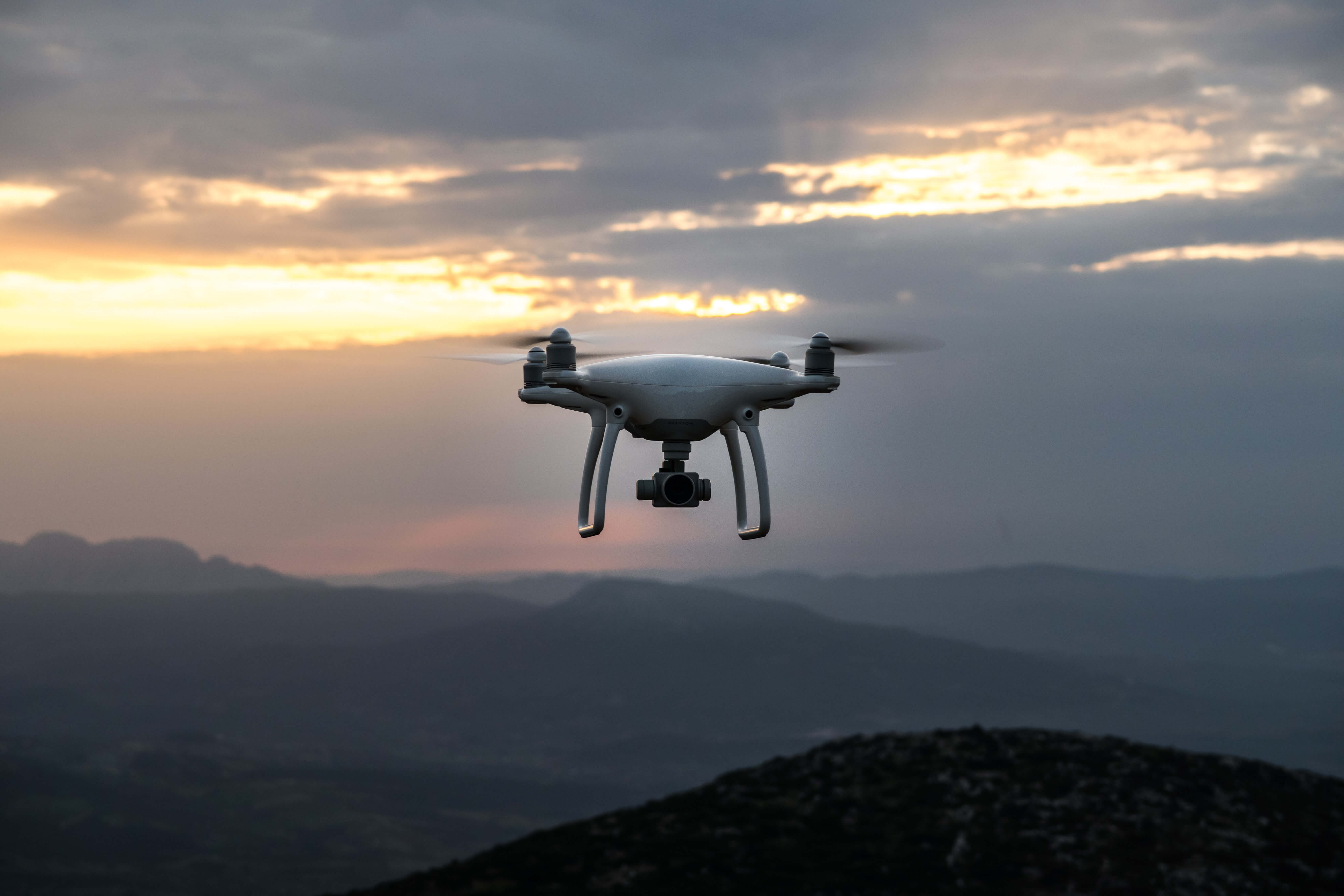
7. Regulatory Considerations: The operation of passenger drones is subject to regulations and certifications by aviation authorities in different countries. These regulations aim to ensure safety, air traffic management, and integration with existing airspace. As the technology evolves, regulations specific to passenger drones are being developed to govern their operation and ensure public safety.
Passenger drones hold the promise of revolutionizing urban transportation, reducing congestion, and providing efficient point-to-point travel. They have the potential to transform industries such as transportation, emergency services, tourism, and logistics.
However, it's important to note that widespread adoption and integration of passenger drones into existing infrastructure will require addressing various challenges, including safety, regulations, infrastructure development, and public acceptance.

How Do Hand Operated Drones Work ?
Hand-operated drones, also known as gesture-controlled drones, allow users to control the drone's movement and perform various functions using hand gestures or movements. These drones utilize advanced technologies such as computer vision, motion sensors, and gesture recognition algorithms to interpret the user's hand movements and translate them into commands for the drone.
Here's a detailed explanation of how hand-operated drones work:
1. Gesture Recognition: Hand-operated drones are equipped with cameras or sensors that capture the motion of the user's hands. The captured data is processed using computer vision techniques to identify and track the user's hand gestures and movements.

2. Data Processing: The captured hand movement data is analyzed and processed either onboard the drone or on a connected device such as a smartphone or tablet. This processing involves extracting key features from the hand movements and performing gesture recognition algorithms to determine the intended command or action.
3. Gesture Mapping: Once the hand gestures are recognized, they are mapped to specific predefined commands or flight maneuvers. For example, raising one hand might be mapped to the command for takeoff, while tilting the hand to the left or right could be mapped to control the drone's yaw or rotation.

4. Flight Control: The mapped gestures are translated into flight control commands that adjust the drone's speed, altitude, direction, or other flight parameters. These commands are then sent to the drone's flight control system, which consists of motors, propellers, and stabilization mechanisms. The flight control system responds to the commands and maneuvers the drone accordingly.
5. Real-Time Feedback: Hand-operated drones often provide real-time feedback to the user to enhance the control experience. This feedback can be visual, such as LED lights on the drone that indicate the drone's status or flight mode. Some drones also provide haptic feedback, which can include vibrations or other tactile sensations to give the user a sense of control.

6. Safety Features: Hand-operated drones may include safety features to prevent accidents and collisions. These features can include obstacle detection and avoidance systems that use sensors or cameras to identify and avoid obstacles in the drone's flight path. Some drones also have emergency stop functions that immediately halt the drone's movement in case of an emergency.
7. Limitations: Hand-operated drones have some limitations due to the complexity of accurately interpreting hand gestures and the potential for false detections. Factors such as lighting conditions, distance, and occlusions can affect the reliability of gesture recognition. Additionally, hand-operated drones may not offer the same level of precision and control as traditional remote controllers, especially for complex flight maneuvers.

It's important to note that different hand-operated drones can have varying levels of sophistication and functionality. Some drones may have additional features such as autonomous flight modes, waypoint navigation, or compatibility with mobile apps for extended control options. Manufacturers continue to innovate in this field, improving the accuracy and responsiveness of gesture recognition systems, thereby enhancing the overall user experience with hand-operated drones.
What Is An RC Drone ?
An RC drone, also known as a remote-controlled drone or radio-controlled drone, is an unmanned aerial vehicle (UAV) that can be controlled remotely using a handheld transmitter or controller. RC drones are widely used for recreational purposes, aerial photography and videography, racing, and various other applications. Here's a detailed explanation of how RC drones work:
1. Transmitter and Receiver: RC drones consist of two primary components: the transmitter (or controller) and the receiver. The transmitter is held by the operator and sends control signals to the drone, while the receiver is installed on the drone and receives these signals.

2. Radio Communication: The transmitter and receiver communicate using radio waves. The transmitter emits radio signals containing control commands, such as throttle, yaw, pitch, and roll, which determine the drone's movement and behavior. The receiver on the drone picks up these signals and translates them into corresponding actions.
3. Flight Control System: RC drones have an onboard flight control system that processes the commands received from the receiver and adjusts the drone's motors and flight controls accordingly. This system includes microcontrollers, gyroscopes, accelerometers, and other sensors to maintain stability and control during flight.

4. Motors and Propellers: RC drones are equipped with multiple motors and propellers that generate lift and thrust. The flight control system adjusts the speed and rotation of these motors to control the drone's movement, altitude, and orientation. Different motor speeds and propeller configurations allow the drone to move in various directions, perform flips, or hover in place.
5. Power Source: RC drones are powered by rechargeable batteries, typically lithium polymer (LiPo) batteries. These batteries provide the necessary electrical energy to drive the motors, power the flight control system, and operate any additional features or onboard cameras.

6. Remote Control Functions: RC drone transmitters often feature various controls and switches.
These include:
• Throttle: Controls the drone's vertical movement (up and down).
• Yaw: Adjusts the drone's rotation or heading.
• Pitch: Controls the drone's forward and backward movement.
• Roll: Controls the drone's lateral movement (side to side).
• Trim: Fine-tuning controls to adjust the drone's stability and balance.
• Mode Switch: Switches between different flight modes or control settings, such as beginner, intermediate, or expert modes.
• Auxiliary Functions: Some transmitters have additional switches or buttons to activate features like one-touch takeoff and landing, return to home, or camera control (if the drone has an onboard camera).
7. Safety Features: Many RC drones incorporate safety features to prevent accidents and protect the drone. These can include low voltage protection, which triggers a warning or automatic landing when the battery voltage is low, as well as propeller guards to minimize damage in case of collisions.

It's important to note that RC drones come in various sizes and configurations, ranging from small indoor models to larger outdoor drones. Additionally, advancements in technology have led to the integration of features like GPS navigation, altitude hold, obstacle avoidance, and FPV (First-Person View) capabilities, which enhance the flying experience and functionality of RC drones.
Can You Control A Drone From Home ?
Yes, it is possible to control a drone from home, especially if the drone has remote control capabilities and is equipped with features like Wi-Fi or long-range radio communication. Here's a detailed explanation of how you can control a drone from home:
1. Remote Control via Transmitter: Most consumer drones come with a handheld transmitter or controller that allows you to wirelessly control the drone. The transmitter communicates with the drone using radio waves, sending control signals to maneuver the drone in various directions. As long as you have the drone within the range of the transmitter, you can control it from your home.
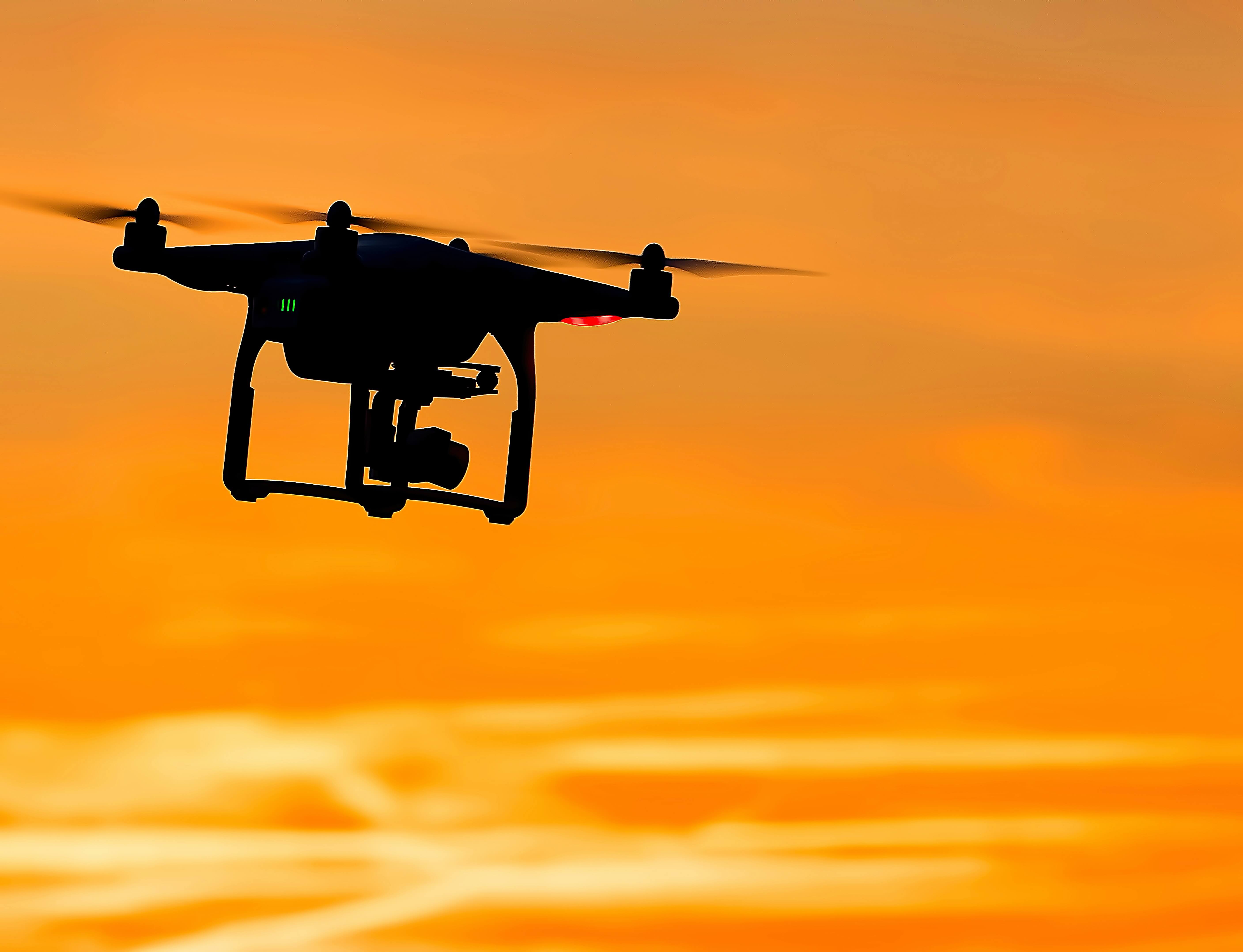
2. Wi-Fi or Smartphone Control: Many drones also offer Wi-Fi connectivity and can be controlled using a smartphone or tablet. The drone creates its own Wi-Fi network, and you can connect your mobile device to that network. Once connected, you can use a compatible app to access the drone's control interface, enabling you to fly the drone, adjust settings, and even access additional features like autonomous flight modes or camera controls.
3. First-Person View (FPV): Some drones have FPV capabilities, which allow you to view a live video feed from the drone's onboard camera directly on your mobile device or through dedicated FPV goggles. This immersive experience enables you to see what the drone sees in real-time, giving you a first-person perspective as you control the drone from home.

4. Remote Access and Internet Control: Advanced drones equipped with internet connectivity and advanced flight control systems may provide the ability to control the drone remotely from anywhere with an internet connection. This is typically achieved through a web-based interface or a dedicated app that connects to the drone's system. By logging into the drone's network remotely, you can control its movements, access its camera feed, and perform other functions as if you were physically present.
5. Autopilot and Waypoint Navigation: Some drones offer autopilot modes and waypoint navigation capabilities. With these features, you can plan a flight path for the drone using a map interface on your smartphone or computer. Once programmed, the drone can fly autonomously along the specified route, allowing you to control its movements and monitor its progress from home.
6. Limitations and Considerations: While it is possible to control a drone from home, there are some limitations and considerations to keep in mind:
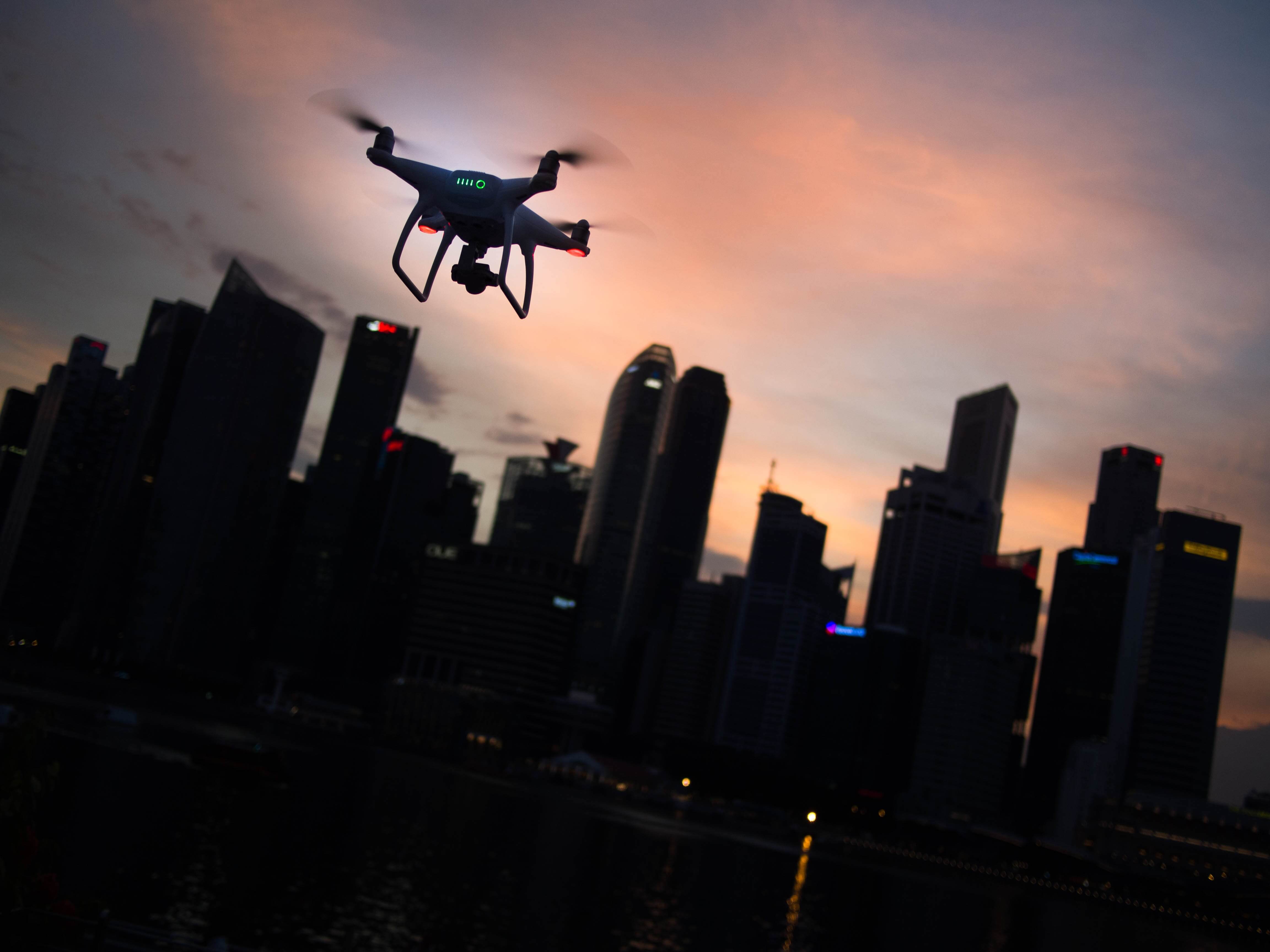
• Range: The range of the drone's control signal is limited, typically a few hundred meters to a few kilometers depending on the model. Make sure you stay within the range to maintain reliable control.
• Regulations: Ensure that you are familiar with and follow local regulations and restrictions regarding drone usage, including flight distances, altitude limits, and privacy considerations.
• Obstacles and Interference: Be mindful of obstacles such as buildings, trees, or power lines that can interfere with the drone's signal or pose a safety risk. Fly in open areas away from potential hazards.

• Safety Precautions: Always prioritize safety when flying a drone. Be aware of your surroundings, avoid crowded areas, and fly responsibly to prevent accidents or harm to people or property.
By utilizing the available technology and following responsible drone flying practices, you can control and enjoy the capabilities of your drone from the comfort of your home.
How Much Does A Human Drone Cost ?
The cost of a human drone, also known as a passenger drone or eVTOL aircraft, can vary significantly based on several factors such as brand, features, capabilities, and level of development. It's important to note that as of my knowledge cutoff in September 2021, passenger drones were still in the early stages of development and commercialization, and the market was evolving rapidly.
Therefore, specific pricing details may change over time. Nonetheless, here's a general overview of the cost considerations for human drones:
1. Development Stage: Human drones are a relatively new technology, and many designs are still in the prototype or testing phase. At this stage, the cost is primarily associated with research and development, engineering, and manufacturing processes. These costs can be substantial and are typically borne by the manufacturers and investors.
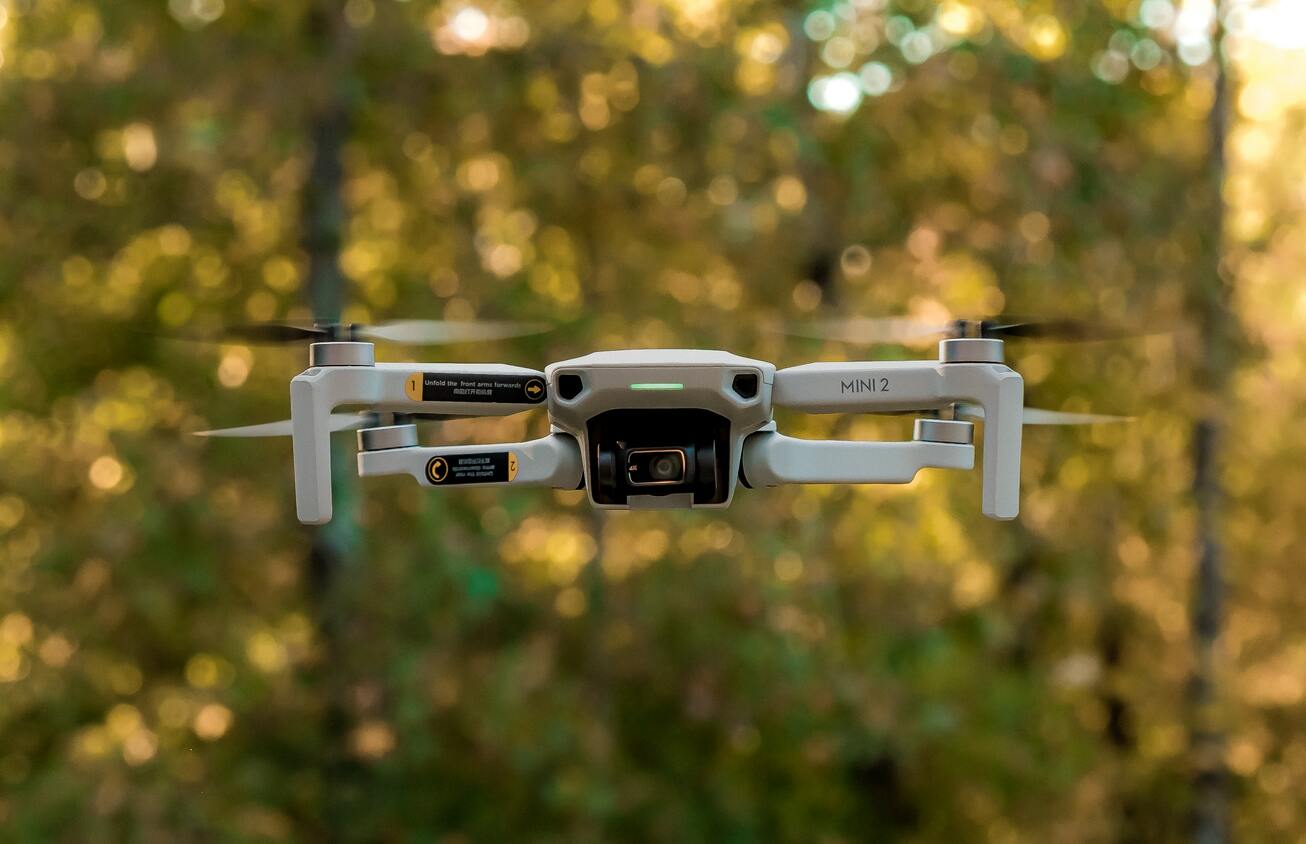
2. Manufacturing and Production: Once a human drone design is finalized and ready for commercial production, the manufacturing costs come into play. The complexity of the aircraft, materials used, manufacturing processes, and scale of production can influence the overall cost. It's worth noting that as production scales up and technology advances, economies of scale may lead to cost reductions.
3. Features and Capabilities: The cost of a human drone can be influenced by the features and capabilities it offers. For example, drones with advanced autonomous flight modes, longer flight range, higher speeds, luxurious interiors, or cutting-edge safety systems may have a higher price tag due to the additional technology and components required.

4. Brand and Reputation: Established brands with a strong reputation in the aviation or drone industry may command higher prices for their human drones. These brands may have invested significantly in research, development, and safety certifications, which can increase the overall cost.
5. Market Demand and Competition: Market dynamics, including demand and competition, can impact the pricing of human drones. As the technology matures and more manufacturers enter the market, it is possible that prices may become more competitive.

Given the evolving nature of the industry and the absence of specific pricing information for commercially available human drones, it is challenging to provide exact cost figures.
However, it's reasonable to expect that the initial pricing for commercial passenger drones will likely be in the higher range due to the significant investment in research, development, safety certifications, and limited production volumes. Over time, as the technology becomes more widespread and economies of scale come into effect, it is expected that prices may become more affordable and accessible to a broader market segment.
What Is The Most Effective Weapon Against Drones ?
The most effective weapon against drones depends on the specific circumstances, the drone's size and capabilities, and the intended objective. Here are several methods that have been used or explored for countering drones:
1. Radio Frequency (RF) Jammers: RF jammers disrupt the communication link between the drone and its operator by transmitting strong radio signals on the same frequency used for drone control. This can cause the drone to lose control and either land or return to its home point. RF jammers are effective against drones that rely on radio frequency communication, but they can be limited against drones with autonomous or pre-programmed flight capabilities.

2. GPS Jamming and Spoofing: Drones often utilize GPS signals for navigation and positioning. GPS jammers or spoofing devices can interfere with the drone's GPS reception, causing it to lose its position or navigate inaccurately. This can disrupt the drone's ability to follow a specific flight path or maintain stable flight.
3. Drone Capture Nets: Drone capture nets are deployed from another aircraft or from the ground to physically entangle and capture the drone mid-flight. These nets are designed to disable or immobilize the drone, allowing it to be safely retrieved. This method is particularly effective against smaller drones and those flying at lower altitudes.

4. Drone Detection and Tracking Systems: Drone detection systems use a combination of radar, acoustic sensors, and video cameras to detect, track, and identify drones in the airspace. Once a drone is detected, appropriate measures can be taken to neutralize or mitigate the threat. While detection systems do not directly eliminate drones, they enable authorities to respond effectively and deploy appropriate countermeasures.
5. Directed Energy Weapons: Directed energy weapons, such as lasers or microwave systems, are being explored as potential counter-drone solutions. These weapons aim to disable or destroy drones by targeting their electronic systems, sensors, or power sources. Directed energy weapons can offer a rapid response and precise targeting, but they may require significant power and have regulatory limitations.
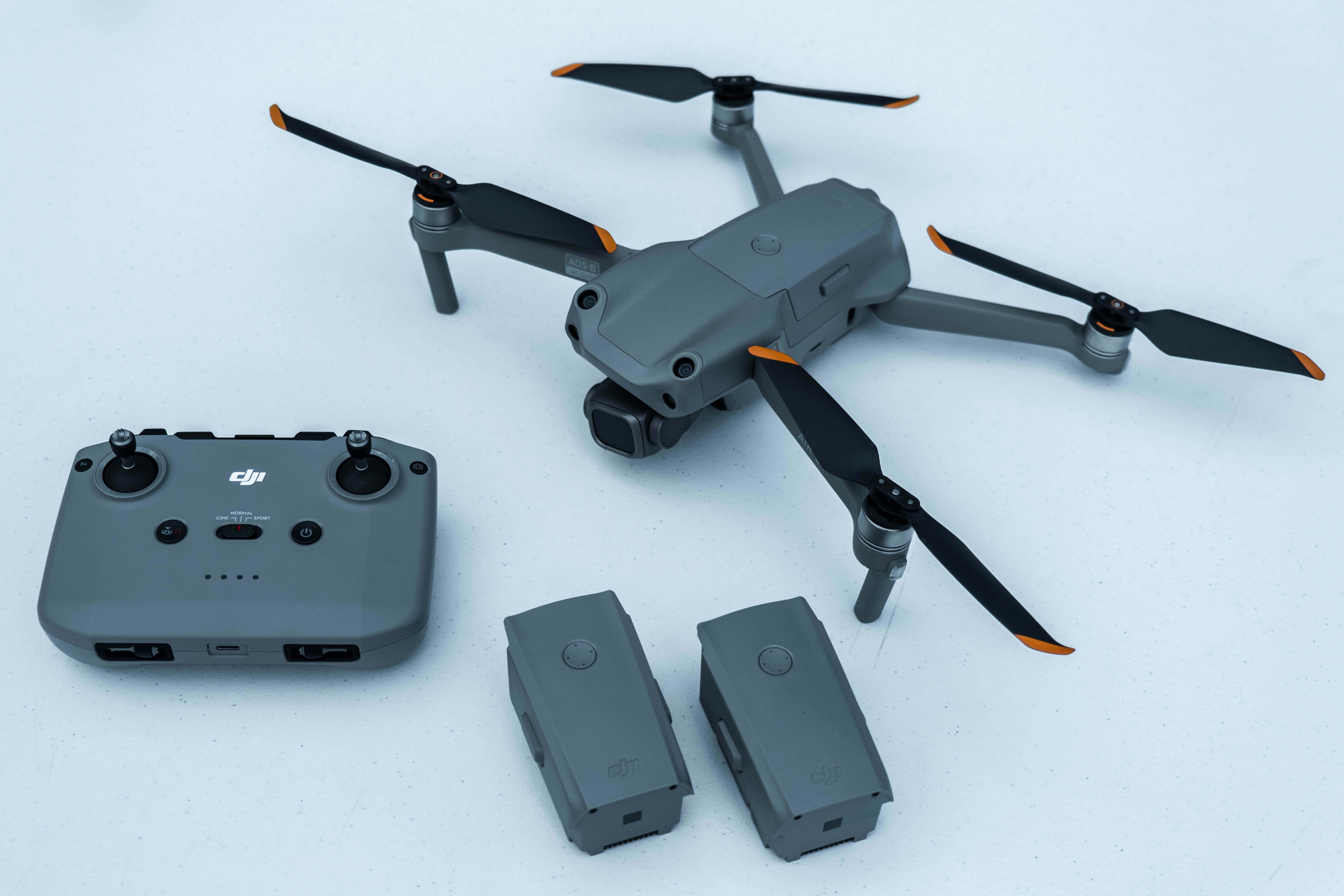
6. Anti-Drone Drones: Some counter-drone systems use specialized drones armed with nets, projectiles, or other means to intercept and neutralize unauthorized drones. These anti-drone drones can autonomously detect and engage other drones, effectively neutralizing the threat.
7. Legislation and Regulation: Legal and regulatory frameworks play a crucial role in countering drones. Governments can enact laws and regulations that define no-fly zones, establish restrictions on drone operation, and impose penalties for unauthorized drone activities. These measures can deter individuals from misusing drones and provide legal means for enforcement.
It's important to note that the use of counter-drone measures should comply with local laws and regulations, as well as respect the safety and privacy of individuals. Different counter-drone methods have varying effectiveness depending on the specific drone and the intended objective. Integrated counter-drone systems that combine multiple approaches, such as detection, tracking, and mitigation, are often considered the most comprehensive and effective means of countering drone threats.
How Far Can A Ghost Drone Fly ?
The term "ghost drone" is a bit ambiguous and does not refer to a specific drone model or brand. However, assuming you are referring to a consumer-grade drone commonly referred to as a "ghost drone," I can provide some general information about the flight range of typical consumer drones.
Consumer drones, including those often referred to as "ghost drones," usually have a limited flight range. The flight range depends on various factors, such as the drone's design, battery capacity, communication technology, and regulatory restrictions. Here's a breakdown:
1. Wi-Fi-Based Drones: Some consumer drones rely on Wi-Fi connectivity between the drone and the controller. These drones typically have a shorter range, typically up to a few hundred meters, depending on the quality of the Wi-Fi connection and potential signal interference.
2. Radio-Controlled Drones: Many consumer drones use radio-controlled technology, such as 2.4 GHz or 5.8 GHz frequency bands, for communication between the drone and the controller. These drones typically offer a longer flight range, ranging from a few hundred meters up to several kilometers. The actual range can be influenced by factors like the drone's power output, the quality of the controller's radio transmitter, and the presence of obstructions or signal interference.
3. Regulatory Restrictions: It's important to note that drone flight range can be limited by regulations imposed by aviation authorities or local laws. In many countries, drones must be flown within the operator's visual line of sight (VLOS) or adhere to specific altitude and distance limits. These regulations are in place for safety and to prevent interference with other aircraft.
4. Signal Amplifiers and Range Extenders: Some drone manufacturers offer signal amplifiers or range extenders as optional accessories. These devices can enhance the range of the drone's control signal by boosting the transmitter power or improving signal reception, allowing the drone to fly farther than its standard range. However, it's crucial to comply with local regulations when using such accessories.
It's worth noting that the flight range mentioned above is applicable to typical consumer drones. Specialized or professional-grade drones designed for longer range flights, such as those used for commercial or industrial applications, can have significantly extended flight ranges, often reaching several kilometers or even beyond visual line of sight (BVLOS) operations with proper authorization.
When considering a specific drone model, it's essential to refer to the manufacturer's specifications and recommendations regarding the flight range. Additionally, it's important to operate the drone within legal boundaries, prioritize safety, and ensure a reliable and stable control connection between the drone and the controller.
What Is A Toothpick Drone ?
A toothpick drone refers to a specific type of micro quadcopter drone that is lightweight, compact, and designed for high-performance and acrobatic flying. These drones are typically built using ultra-lightweight components, similar to those used in toothpick construction, hence the name "toothpick drone." Here's a detailed explanation of toothpick drones:
1. Lightweight Construction: Toothpick drones are constructed using lightweight materials to achieve maximum performance. The frame is typically made of carbon fiber or similar lightweight materials, which provide strength and durability while keeping the overall weight of the drone minimal.
2. Compact Size: Toothpick drones are small in size, often referred to as "micro" or "nano" drones. They have a compact and minimalist design, allowing them to be highly maneuverable and suitable for flying in tight spaces.
3. High-Performance Components: Toothpick drones are equipped with high-performance components to maximize their speed, agility, and responsiveness. They typically feature powerful brushless motors, efficient electronic speed controllers (ESCs), and lightweight flight controllers. These components contribute to rapid acceleration, quick direction changes, and precise control.
4. FPV Capability: Many toothpick drones have the option for First-Person View (FPV) flying. They may come with an integrated camera or a mount to attach a small FPV camera. FPV allows the pilot to experience real-time video transmission from the drone's perspective, providing an immersive flying experience.
5. Customizability: Toothpick drones often offer a high level of customizability. Pilots can choose and upgrade various components such as motors, propellers, flight controllers, and cameras, tailoring the drone to their specific preferences and flying style.
6. Battery and Flight Time: Due to their lightweight construction, toothpick drones typically use small, high-discharge lithium polymer (LiPo) batteries. These batteries provide sufficient power for short, intense flights. Flight times typically range from 2 to 6 minutes, depending on the configuration and flying style.
7. Acrobatic Flying: Toothpick drones are renowned for their acrobatic capabilities. With their lightweight design, high-performance components, and responsive controls, they can perform various aerial maneuvers such as flips, rolls, dives, and sharp turns. They are popular among FPV freestyle pilots and racers who seek agile and dynamic flying experiences.
Toothpick drones have gained popularity among drone enthusiasts due to their portability, agility, and versatility. They are often used for indoor flying, outdoor freestyle acrobatics, and racing in confined spaces. Their compact size and lightweight construction make them suitable for pilots of all skill levels, from beginners to experienced flyers.
What Is A Raven Drone ?
The Raven drone is a small tactical unmanned aerial vehicle (UAV) developed by AeroVironment Inc., a leading manufacturer of drones and aerospace systems. The Raven is widely used by military forces around the world for intelligence, surveillance, and reconnaissance (ISR) missions. Here's a detailed explanation of the Raven drone:
1. Design and Structure: The Raven is a hand-launched UAV designed for portability and ease of operation. It has a fixed-wing configuration with a lightweight airframe made of durable materials such as carbon fiber. The drone typically weighs around 4.2 pounds (1.9 kilograms) and has a wingspan of approximately 4.5 feet (1.4 meters).
2. Electric Propulsion: The Raven is powered by an electric propulsion system. It utilizes a small electric motor and a rechargeable battery pack to generate thrust and sustain flight. The electric propulsion system offers quiet operation, low acoustic signature, and long endurance for extended missions.
3. Payload and Sensors: The Raven is equipped with various payloads and sensors to support its surveillance and reconnaissance capabilities. It typically carries an electro-optical (EO) camera that captures high-resolution still images and video footage during flight. Some versions of the Raven also include an infrared (IR) camera for low-light and nighttime operations.
4. Remote Control Operation: The Raven is operated remotely by a small ground control station (GCS). The GCS consists of a ruggedized control unit with a handheld controller, a display screen, and an antenna for real-time communication with the drone. The operator uses the controller to maneuver the Raven and view the live video feed transmitted from its onboard cameras.
5. Autonomous Flight Modes: The Raven offers several autonomous flight modes to enhance its operational flexibility and ease of use. These modes include autonomous takeoff and landing, pre-programmed waypoint navigation, and loitering capabilities. The waypoint navigation mode allows the operator to define a series of GPS coordinates for the Raven to follow, enabling autonomous missions and route planning.
6. Portability and Deployability: One of the key advantages of the Raven is its portability and rapid deployment capability. The drone can be easily transported in a compact case and assembled quickly for launch. It can be hand-launched without the need for a runway, allowing operators to deploy it from various locations, including forward operating bases, vehicles, or remote areas.
7. Tactical Use and Applications: The Raven is primarily used for tactical operations by military forces worldwide. Its small size, quiet operation, and real-time surveillance capabilities make it well-suited for close-range reconnaissance, target tracking, and situational awareness in both urban and rural environments. The Raven provides valuable intelligence to support decision-making and enhance the effectiveness of military missions.
It's important to note that the Raven drone is a specific product of AeroVironment Inc. and may have different versions or configurations depending on customer requirements and operational needs. The information provided here is based on the general characteristics and capabilities associated with the Raven drone.
Click here for more information Unmanned Aerial Vehicle Endurance